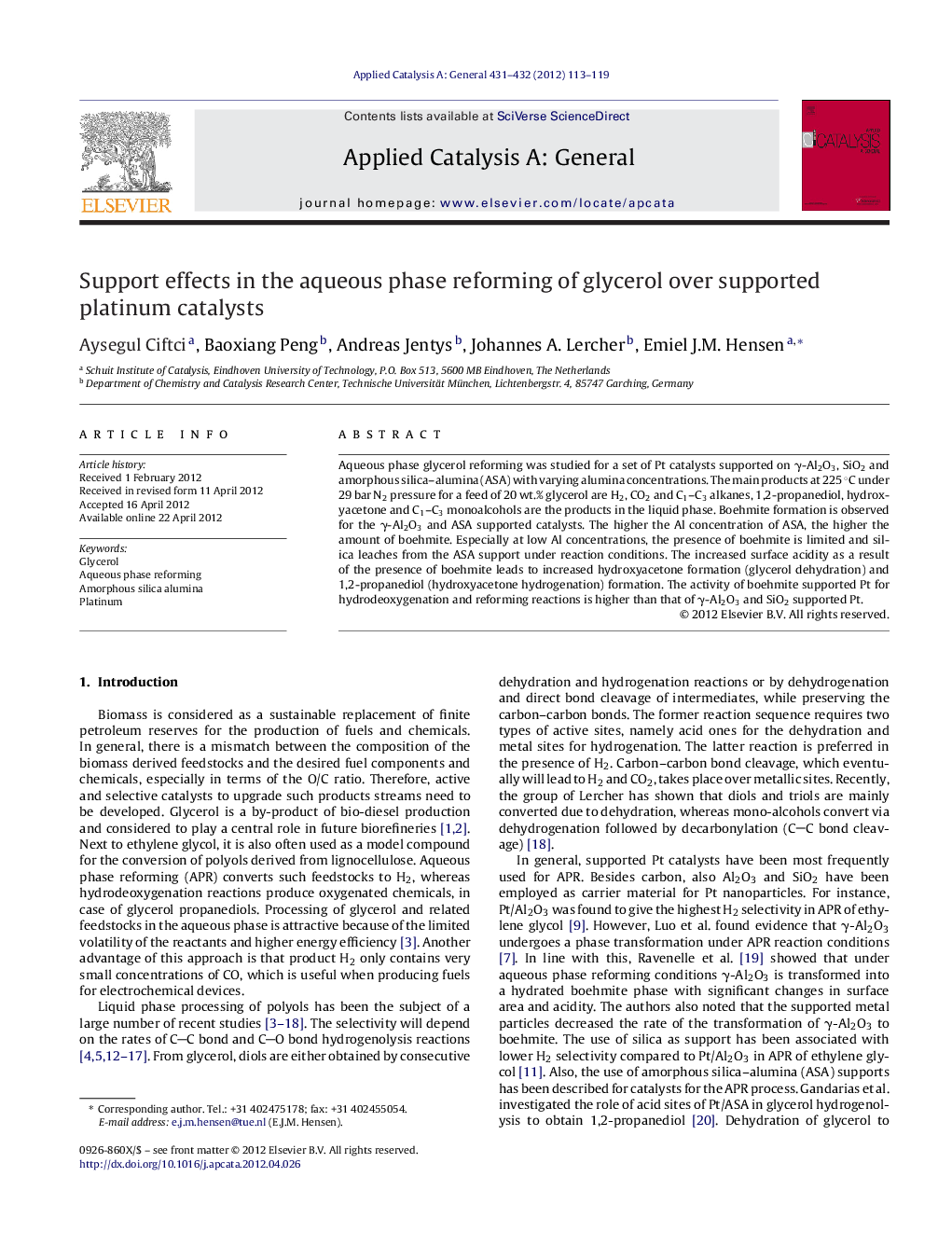| Article ID | Journal | Published Year | Pages | File Type |
|---|---|---|---|---|
| 40799 | Applied Catalysis A: General | 2012 | 7 Pages |
Aqueous phase glycerol reforming was studied for a set of Pt catalysts supported on γ-Al2O3, SiO2 and amorphous silica–alumina (ASA) with varying alumina concentrations. The main products at 225 °C under 29 bar N2 pressure for a feed of 20 wt.% glycerol are H2, CO2 and C1–C3 alkanes, 1,2-propanediol, hydroxyacetone and C1–C3 monoalcohols are the products in the liquid phase. Boehmite formation is observed for the γ-Al2O3 and ASA supported catalysts. The higher the Al concentration of ASA, the higher the amount of boehmite. Especially at low Al concentrations, the presence of boehmite is limited and silica leaches from the ASA support under reaction conditions. The increased surface acidity as a result of the presence of boehmite leads to increased hydroxyacetone formation (glycerol dehydration) and 1,2-propanediol (hydroxyacetone hydrogenation) formation. The activity of boehmite supported Pt for hydrodeoxygenation and reforming reactions is higher than that of γ-Al2O3 and SiO2 supported Pt.
Graphical abstractFigure optionsDownload full-size imageDownload high-quality image (96 K)Download as PowerPoint slideHighlights► Alumina, silica and silica–alumina supported Pt tested in aqueous phase reforming of glycerol. ► Alumina-containing supports convert to boehmite under reaction conditions. ► Boehmite formation leads to increased 1,2-propanediol selectivity. ► Pt on boehmite is more active than Pt on alumina or silica.
